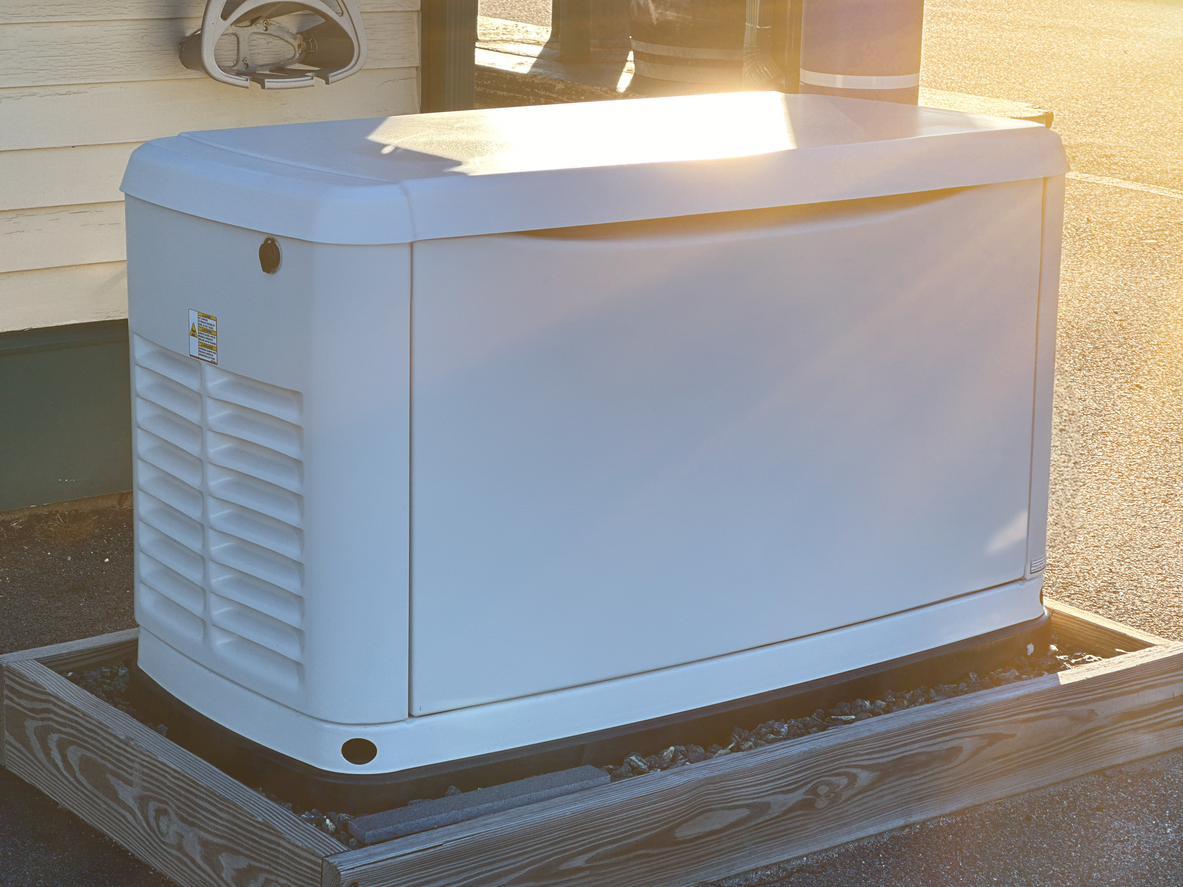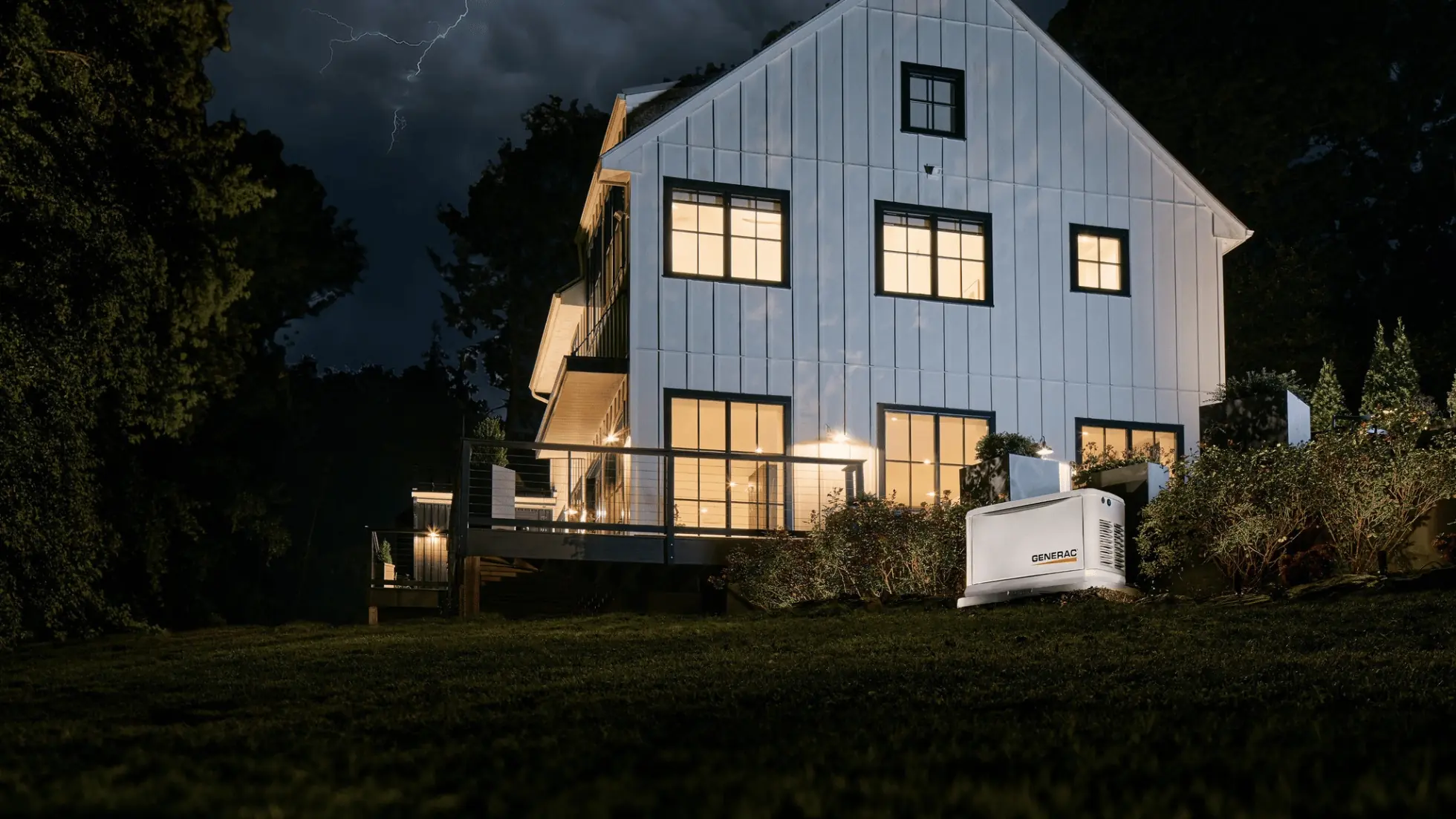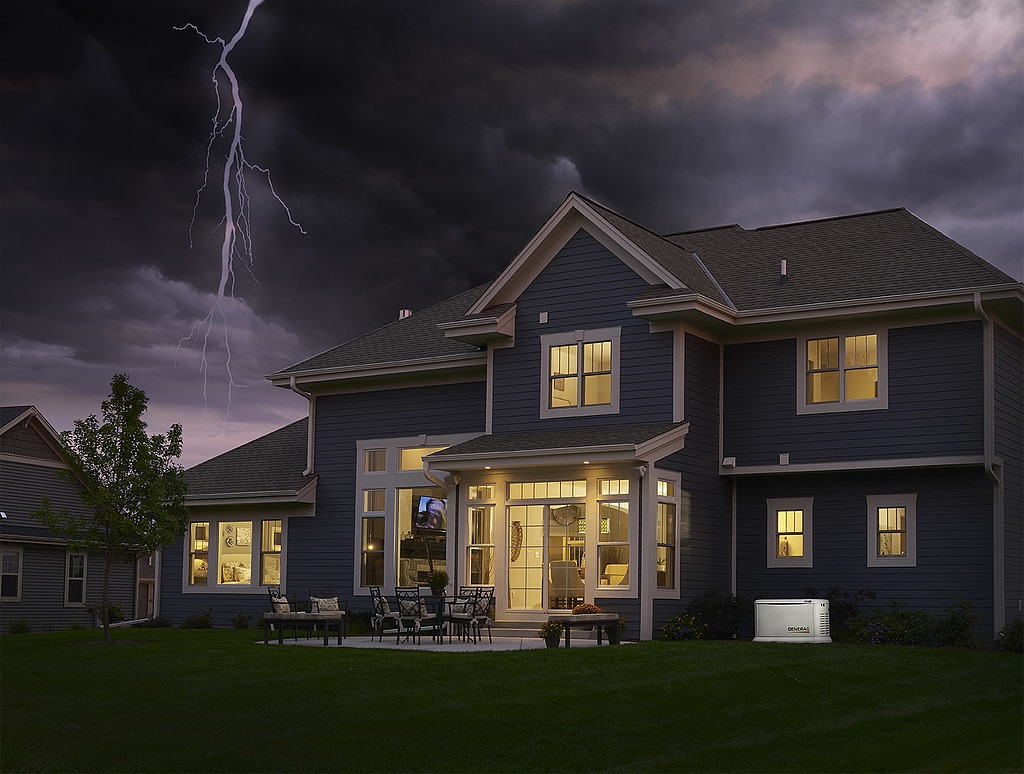What Size Generator to Run a 1500 Sq Ft House? Your Best Options

For a 1,500 sq ft house, you’ll need a generator between 8kW and 22kW, depending on what you want to power. Smaller sizes cover essentials like lights and refrigerators, while a 20–22kW unit can handle the whole house, including HVAC. Getting the size right ensures your generator runs efficiently when it matters most. Need help? Check out our installation services and let us take care of it.
Factors Affecting Generator Size
The right generator size depends on how much of your home you want to power during an outage. Here are the key factors to consider:
- Essential Systems
- Start with the must-haves: refrigerator, lights, and HVAC. These are non-negotiables for most homes.
- Additional Appliances
- If you have electric stoves, water heaters, or well pumps, add their power needs to the total. These can significantly increase your requirements.
- Seasonal Demand
- Heating in winter and cooling in summer demand more power. Factor this in if you live in extreme climates.
- Energy Efficiency
- Homes with energy-efficient appliances and systems may need less power overall, reducing the size of the generator required.
- Whole-House vs. Essentials Only
- Decide if you want to power the entire home or just critical systems. Whole-house setups generally require 15–22kW generators.
How to Calculate Your Power Needs
To figure out what size generator you need, you’ll need to calculate your home’s total power requirements. Here’s how to get started:
- List Your Essentials
- Write down everything you want powered during an outage: HVAC, refrigerator, lights, water heater, etc.
- Check Wattage
- Look up the starting (surge) and running wattage for each appliance. Starting wattage is usually higher and needs to be included in your calculations.
- Add It Up
- Add the wattages for all your essential items. This gives you the minimum capacity your generator should handle.
- Factor in Extra Power
- It’s a good idea to add about 10–20% to your total for safety. This keeps the generator from running at max capacity all the time, which extends its lifespan.
- Example Calculation
- A typical setup for a 1,500 sq ft home might include:
- HVAC: 4,000W
- Refrigerator: 1,200W
- Lights: 600W
- Miscellaneous: 1,000W
- Total: Around 6,800W. Add 20%, and you’re looking at a generator rated for at least 8,000W (8kW).
- A typical setup for a 1,500 sq ft home might include:
If this seems overwhelming, you’re not alone. Calculating power needs can be tricky, but getting it right ensures your generator will handle the load safely and efficiently. For help with sizing and installation, you can view our guide here or give us a call and we can get you squared away!
Recommended Generator Sizes
Choosing the right generator size depends on whether you want to power just the essentials or the whole house. Here’s a breakdown to help you decide:
- For Essentials Only (8–12kW)
- Covers basics like your refrigerator, lights, and a small HVAC system.
- Ideal for keeping critical systems running during an outage without powering everything.
- For Partial Home Coverage (12–15kW)
- Adds capacity for extra appliances like a water heater, microwave, or sump pump.
- A good balance if you want more comfort without a whole-house system.
- For Whole-House Power (15–22kW)
- Handles everything in a typical 1,500 sq ft home, including central HVAC, large appliances, and multiple circuits.
- Ensures your home functions as normal, even during extended outages.
Fuel Type Considerations
The fuel type you choose for your generator affects reliability, convenience, and cost. Most residential standby generators use either propane (LP) or natural gas. Here’s what to consider:
- Propane (LP)
- Propane is clean-burning and efficient, making it a popular choice for residential generators.
- It requires a propane tank, which can range in size depending on your setup. Many homeowners already have a tank for other systems like heating or cooking, making installation straightforward.
- One thing to consider is refueling. If your tank isn’t large enough, you’ll need to schedule deliveries, especially during extended outages. However, propane has a long shelf life, so it’s an excellent option for systems that aren’t used frequently.
- Natural Gas
- Natural gas runs directly from your home’s utility line, which means no tanks to refill. This makes it incredibly convenient for long outages since there’s a continuous supply.
- It’s also more cost-effective over time, as natural gas tends to be cheaper than propane per unit of energy.
- The only downside is that it depends on your local infrastructure. If natural gas lines aren’t available in your area, this option won’t work for you. Additionally, during extreme events, utility lines can sometimes be interrupted.
Both propane and natural gas are reliable and widely used, but your choice depends on your home’s existing systems and how you want to manage fuel. If you’re unsure which option is best, consult with a professional installer to evaluate your setup and needs.
Choosing the right generator for your 1,500 sq ft home comes down to knowing your power needs, deciding what you want to keep running during an outage, and picking the right size and fuel type. Whether it’s an 8kW generator for just the basics or a 22kW model for whole-house coverage, getting the sizing right is critical to keeping your home running safely and efficiently.If you’re not sure where to start, it’s always best to consult a professional. At Premier Generators, we’ve helped countless homeowners find and install the perfect standby generator for their needs. Ready to get started? Schedule an estimate today and we’ll guide you every step of the way.





